Where Are All The Great Grandmothers of Photography?
Carrie Crow
January 2017
Celebrating Arteidolia’s 3 Year Anniversary
Carrie Crow’s article from April 2016
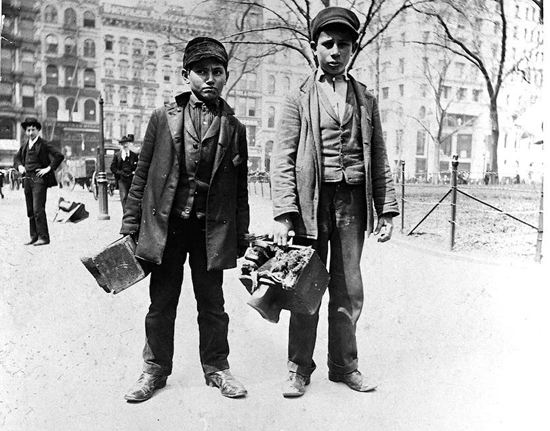 Two Bootblacks, Alice Austen 1896
Two Bootblacks, Alice Austen 1896
There will be a new era, and women will fly into photography. – Eva Watson-Schütze
As a photographer, naturally, I love looking at images. The power of the still image never ceases to thrill me and I’ve found some of the most exciting work in the most unlikely places from the back streets of Quito to a municipal building in Malmö in addition to conventional venues like Les Rencontres d’Arles, a festival I attend every year. While I’m encouraged by the increasing diversity of artists represented in contemporary photography exhibitions, I am dismayed by the continued lack of representation of women in the history of photography narrative.
Walk into any museum in the world with a permanent photography collection and you will find many of the following photographers represented: Eugène Atget, Alfred Stieglitz, E. J. Bellocq, Lewis Hine, August Sander, Edward Steichen, Man Ray, Paul Strand, André Kertész, Jacques Henri Lartigue, László Moholy-Nagy, Ansel Adams, Walker Evans, Henri Cartier-Bresson, David “Chim” Seymour, Harry Callahan, and Robert Capa.
Each holds a rightful place as a pillar in the history of photography; they are the undisputed masters, the great grandfathers of the craft to whom each budding photographer from Quito to Malmö looks for inspiration. However, in light of the fact that someone – a lot of someones – are often missing from museum walls, the question must be raised:
Where are all the great grandmothers of photography and why
aren’t they being exhibited alongside their male counterparts?
To be sure, some photography collections include a Julia Margaret Cameron portrait or two, Dorothea Lange’s migrant mother, maybe Tina Modotti’s magnificent sombreros or a handful of others. Museums do even host the occasional solo female exhibition and more rarely, a blockbuster group show dedicated to women, such as ‘Who’s Afraid of Women Photographers?’ at the Musée d’Orsay this year. Far too often, however, women are excluded from the history of photography narrative, which undermines their significant contributions to the medium and in some cases eliminates their voice entirely.
I’m not talking about the Cindy Shermans of photography. She, like many other women photographers prominent in the last 50 years, has earned international regard for advancing the medium in the context of contemporary art. I’m talking about early photography pioneeresses who were very often working alongside, married to, or lovers of the men in the list above. Where are their collectors, foundations, coffee table books?
Here is part one of a survey organized chronologically by birth of women photographers who deserve far more consideration by curators than given at present. Although many were celebrated in their lifetimes, it’s rare to see them hung alongside the likes of Sander, Steichen, Strand, and Stieglitz, a place they so richly deserve
.
Women Were Photography Pioneers Too
Part One
Anna Atkins (1799-1871)
Considered by many to have created the world’s first photo book and by some records is the first female photographer, Atkins, who was a botanist, created striking cyanotype photograms as a means for preserving specimens of interest. Atkins’ elegant compositions, hand written captions and individually produced cyanotypes brought a heightened aesthetic to her scientific volumes. She self published her first photographic work, Photographs of British Algae: Cyanotype Impressions in 1843 and followed it with two additional books in 1853 and 1854.
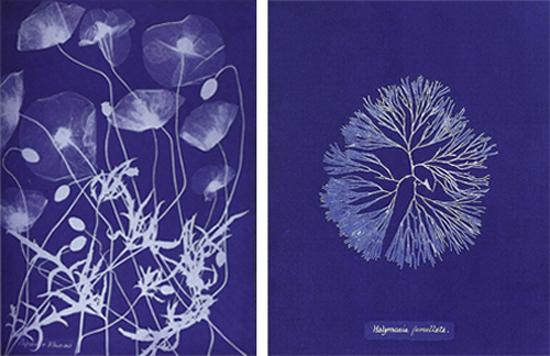 Papaver rhoeas cyanotype from 1861 (left); Halymenia furcellata (right) from
Papaver rhoeas cyanotype from 1861 (left); Halymenia furcellata (right) from
Photographs of British Algae: Cyanotype Impressions 1843
Clementine Maude, Viscountess Hawarden (1822-1865)
Anyone who knows the work of the brilliant Francesca Woodman should see resemblances in the evocative portraits Lady Clementina Hawarden made of her daughters over 100 years before Woodman was born. Shot in empty rooms punctuated with architectural details, shadows and light, Lady Hawarden’s work has a remarkable depth of emotion without being sentimental. She had an editorial eye for poses and a stylist’s aesthetic for dressing her subjects.
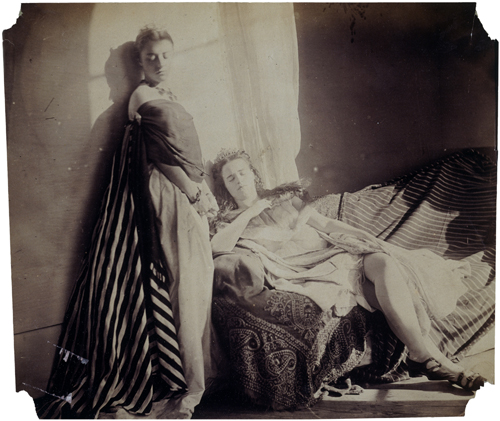 Isabella Grace and Clementina Maude, 1863-4
Isabella Grace and Clementina Maude, 1863-4
Gertrude Käsebier (1852-1934)
Alongside Stieglitz and Steichen, Käsebier was one of only three female founding members of the Photo-Secession movement which aimed to raise the perception of photography into that of fine art. She was commercially ambitious, a trait Stieglitz didn’t like and he later distanced himself from her. Best known for her portraits of members of the Sioux tribe, Käsebier was a master at eliciting raw honesty and depth from her subjects in closely cropped portraits, qualities abundant in documentary portraiture today.
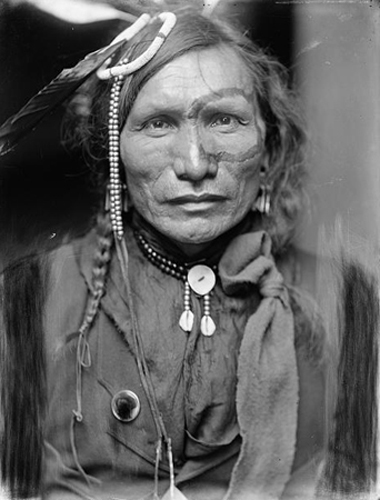 Iron White Man, a Sioux Indian from
Iron White Man, a Sioux Indian from
Buffalo Bill’s Wild West Show, 1900
Mary Devens (1857-1920)
The second female founding member of Photo-Secession, Devens was a master printer and was regarded as being particularly faithful to the pictorialist style which likened photography to painting. It’s not hard to see why. Devens’ soft-focused portraits and landscapes have an impressionistic painterly quality without being decadent; she had a light hand and keen sense of balance. Fellow Photo-Secessionist Stieglitz considered her one of the best pictorial photographers of her time.
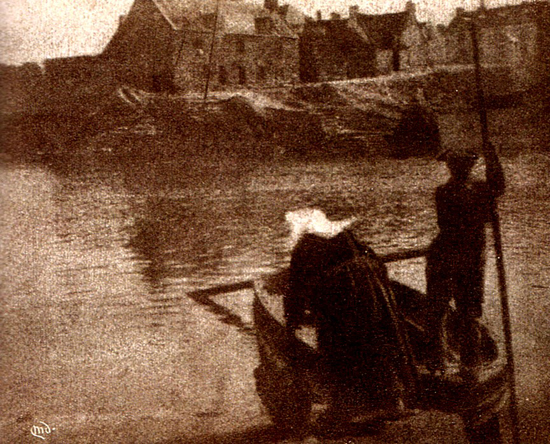 The Ferry, Concarneau, 1904
The Ferry, Concarneau, 1904
Alice Austen (1866-1952)
Considering herself an “amateur,” Austen explored an impressive variety of genres from street photography to personal projects to humanitarian assignments for the U.S. Public Health Service and was one of the first female photographers to work outside the studio. Independent, openly partnered to Gertrude Tate for over fifty years, Austen was a modern woman in every respect with a playful, impish nature, qualities that play out in her clean compositions with unexpected surprises.
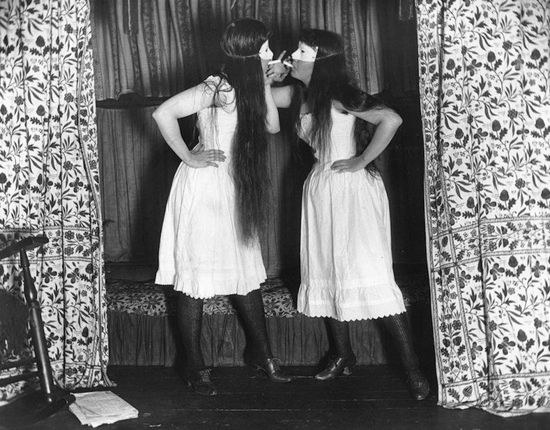 Trude & I masked, short skirts, 1891
Trude & I masked, short skirts, 1891
Eva Watson-Schütze (1867-1935)
There is a spontaneity and aliveness in Watson-Schütze’s work that is singular and her portraits have the unusual quality of engaging the senses, such as smelling a flower, touching one’s hair, and bathing in a waterfall. She is the final female founding member of Photo-Secession and by some accounts, it was Watson-Schütze who suggested forming a photography movement to Stieglitz. A sought-after portrait photographer in her time and a favorite in Stieglitz’s New York Gallery, 291, Watson-Schütze resented being thought of as a “female photographer,” preferring her work to be judged on merit alone.
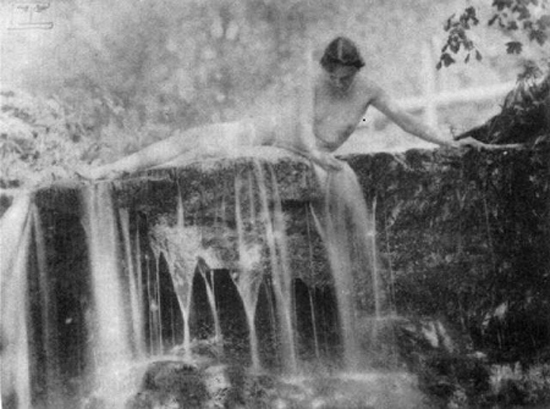 Nude Woman on a Rock, 1904
Nude Woman on a Rock, 1904
Doris Ulmann (1882-1934)
Haunting, ethereal and intensely human, Doris Ulmann’s portraits of ethnic and rural groups in America stand as some of the best documents of their kind and her book, ‘Roll, Jordan, Roll’ is still considered one of the most beautiful photo books ever produced. Having originally studied psychology, Ulmann’s aptitude for accessing her subjects’ interior life is a mark of her deep empathy. Ulmann remarked, ”a face that has the marks of having lived intensely, that expresses some phase of life, some dominant quality or intellectual power, constitutes for me an interesting face.”
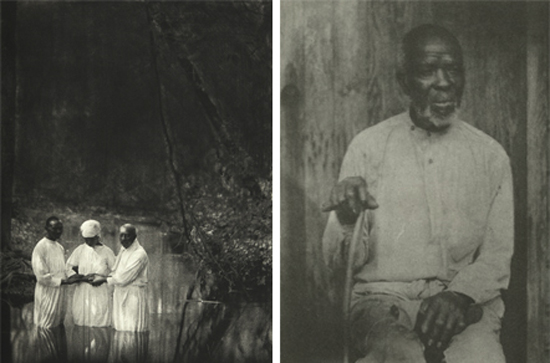 Roll, Jordan Roll,1933
Roll, Jordan Roll,1933
Erna Lendvai-Dircksen (1883-1962)
A city-dweller who was enamored of rural life, Lendvai-Dircksen endeavored to photograph the people, landscapes and architecture of every region in Germany in the early 1900s, a body of work as accomplished as the best male photographers in the genre such as Walker Evans and August Sander. She was a member of the Nazi party and it is unfortunate to note that her images of German children—prized for the way they showcased “desirable” features—made her a popular photographer for Volk und Rasse, a publication dedicated to promoting Aryan ideals.
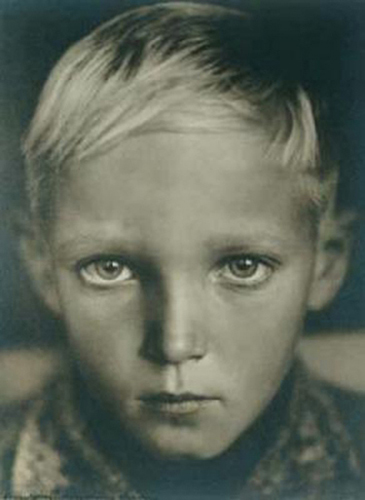
Imogen Cunningham (1883-1976)
Arguably one of the better-known photographers on this list, we nevertheless don’t see Cunningham’s vivid still lifes nearly as often as those of male photographers like Edward Weston and Robert Mapplethorpe. Cunningham was an acknowledged master of many genres, photographing portraits for Vanity Fair, industrial landscapes and shooting documentary street photography—an entirely new genre—in addition to her prized botanicals. She was one of only two women founding members of Group f/64, a movement that advocated a total break from the painterly pictorialism style of photography in favor of compositions rendered in the sharpest focus possible. It is interesting to note that while Cunningham was initially bored by photography, she later became inspired by the work of Gertrude Käsebier while assisting Edward S. Curtis on his book, The North American Indian.
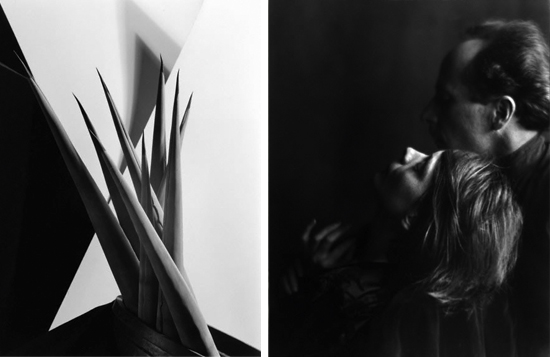 Agave Design 1, 1920s (left), Edward Weston and Margrethe Mather, 1922 (right)
Agave Design 1, 1920s (left), Edward Weston and Margrethe Mather, 1922 (right)
Margrethe Mather (1886-1952)
Mather, depicted above with Edward Weston in Imogen Cunningham’s beautiful portrait of the couple, was Weston’s contemporary, lover, artistic partner, and one of the best known photographers of her time, creating sensual images with a remarkable design aesthetic. On the subject of who influenced whom, Cunningham famously remarked, “…in artistic matters Margaret was of course the teacher, Edward the student.” Mather made a distinct move away from soft-focused pictorialism and used shadows as graphic elements in her portraiture, a technique that was entirely new and totally avant-garde.
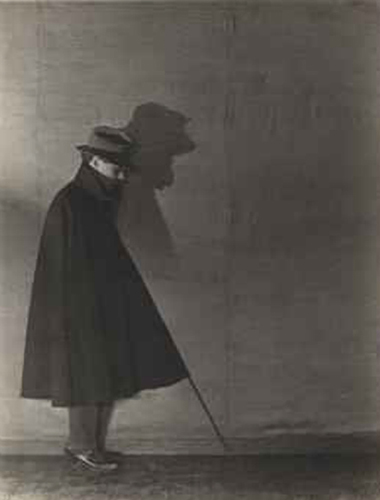 Edward Weston in Shadow, 1920s
Edward Weston in Shadow, 1920s
By the early 20th century, half of these women had given up photography. Watson-Schütze became a painter, Devens’ eyesight failed, Austen lost everything in the stock market crash of 1929 and ended up in the poorhouse on Staten Island, and Mather died with the inaccurate title of “housewife” on her death record. Even their commercial and critical successes didn’t guarantee them the same legacy as their male contemporaries, with some being forgotten entirely. With pictorialism having fallen out of favor and constructivism and modernism on the rise, however, the early 20th century ushered in a new crop of brilliant women photographers we will look at in part two of this series.
Women Were Photography Pioneers Too Series links:
Eva, Anna, Margrethe, Doris: The Gospel According to Women Photographers
Part Two – May 2016
What We Talk About When We Talk About Women Photographers
On Helping and Hindering Their Legacy
Part Three – June 2016
